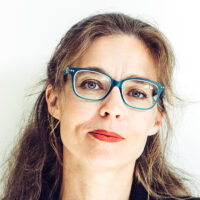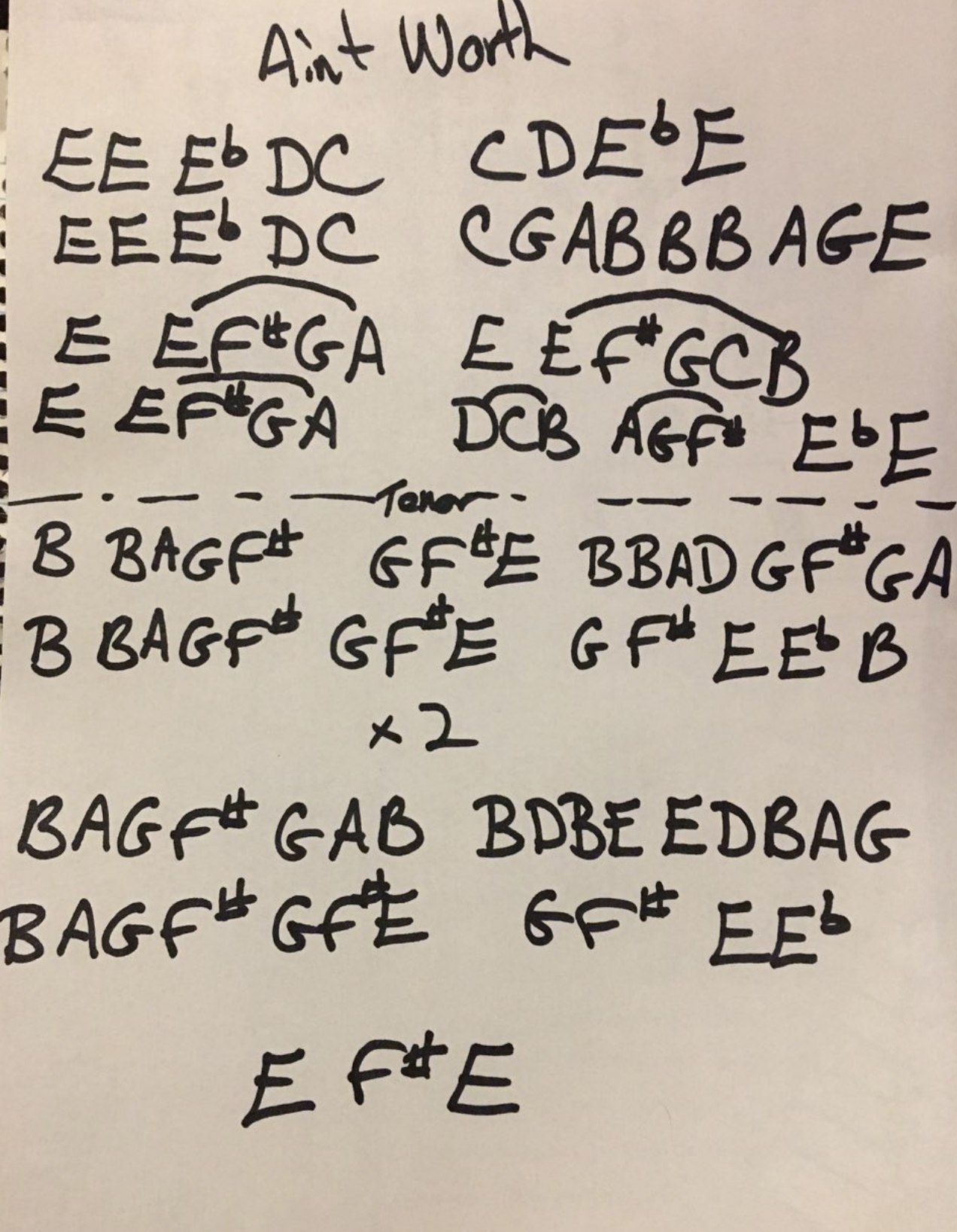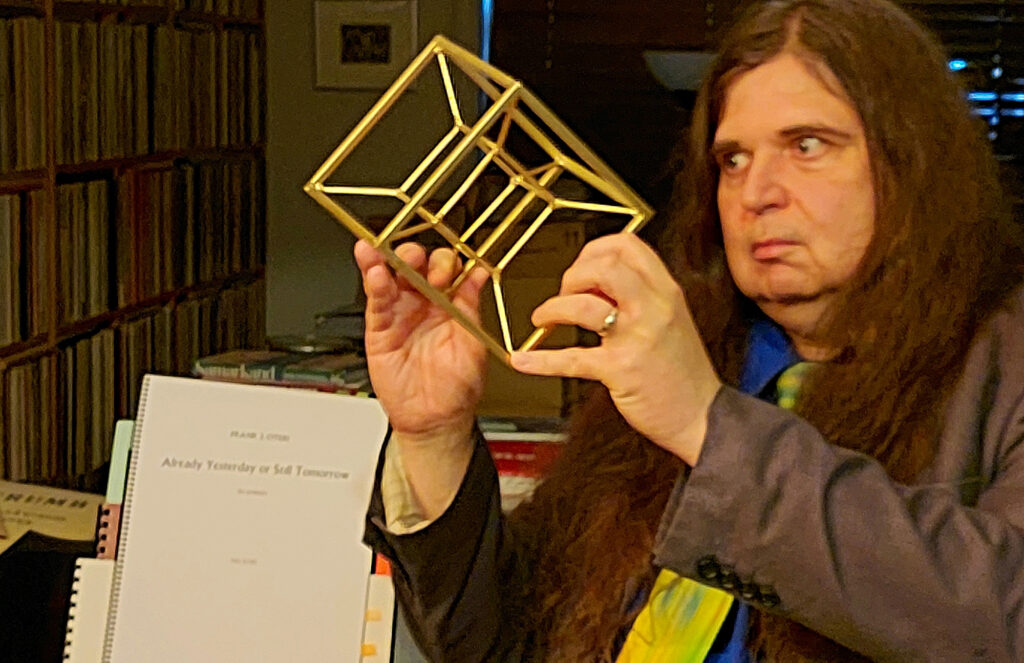The descendants of the Polish, Irish, and Czech immigrants who were murdered at the Homestead Massacre, the black Pittsburghers that were displaced from the jazz mecca that once was Hill District, and the immigrants who happen upon this beautiful...
Marina López
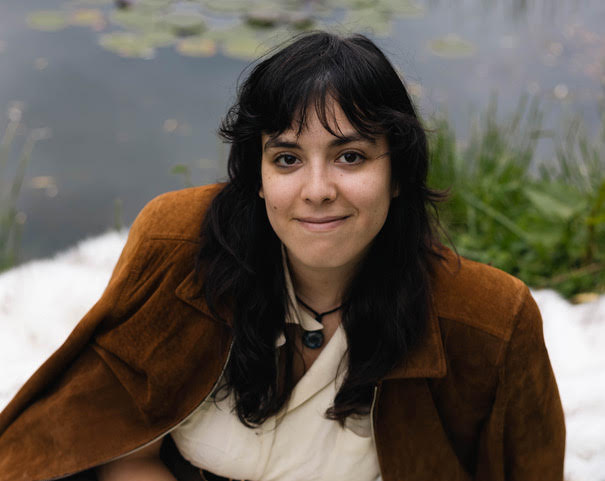
Marina López
In Pittsburgh we live and breathe every day amongst the ruins of the furnaces in which the foundations of this great nation were forged. The people of this city tell stories about their fathers and grandfathers working at these furnaces; the hell on earth upon which the skyscrapers of New York and Chicago were born. (I highly recommend my teacher Leonardo Balada’s Steel Symphony to get a sense of what these places sounded like.)
Through the 1970s and ’80s, as the steel industry moved abroad, the city shrank and had to reinvent itself. Today, it likes to picture itself a high-tech university hub. And this intersection: this cross-pollination and tension between Carnegie Mellon University, the University of Pittsburgh, Google, Duolingo, Carnegie Robotics; the descendants of the Polish, Irish, and Czech immigrants who were murdered at the Homestead Massacre; the black Pittsburghers that were displaced from the jazz mecca that once was Hill District; and the immigrants (like myself) who happen upon this beautiful city to pursue some version of the American dream—this is the canvas upon which this city’s artists create.
Pittsburgh has a wealth of both jazz and classically trained performers. It also has an outstanding number of music organizations and ensembles. The city is still relatively affordable, and has a strong DIY arts and music community.
I immigrated here back in 2011. I would’ve never guessed that twelve years later I’d find myself entrenched in a loving community of DIY artists, classically trained musicians, local bands, jazz performers, poets, activists, and beautiful friends.
I finished graduate school right before the pandemic hit. Like many others, I felt the inertia of my career come to a stand still as the world shut down. The past three years I’ve been getting back into the rhythm of applications and performances, and renegotiating the value of my art and my career in the larger context of my life, my home, and the current state of the world.
I think one of the biggest challenges many composers like myself face is getting our name out there when we don’t live in a major coastal cultural hub, and aren’t enrolled in the best known doctoral programs. There is a lack of access in the new music community. If you don’t have the money to attend music festivals early on in your career, you will miss out on vital connections to propel your career forward. Speaking out and finding ways to make this career path something feasible for all people of all socioeconomic backgrounds is something I’m passionate about.
Music picks…
me…
In this piece, I mix freestyle rap with the renaissance dance form ‘la folia.’ I love deconstructing traditional musical forms. In this piece, each instrument moves through the harmonic structure of la folia at a different rhythm, creating a sonic fractal. So: Freesyle+Folia+Fractal.
other:
My friends Gizelxanath Rodriguez and Ben Barson started Afroyaqui Music collective a few years ago. I really admire their ability to mix art and political activism in a unique jazz-fusion sound. The group is incredibly inclusive, having featured performers from every continent playing instruments from around the world.
Mai Khoi
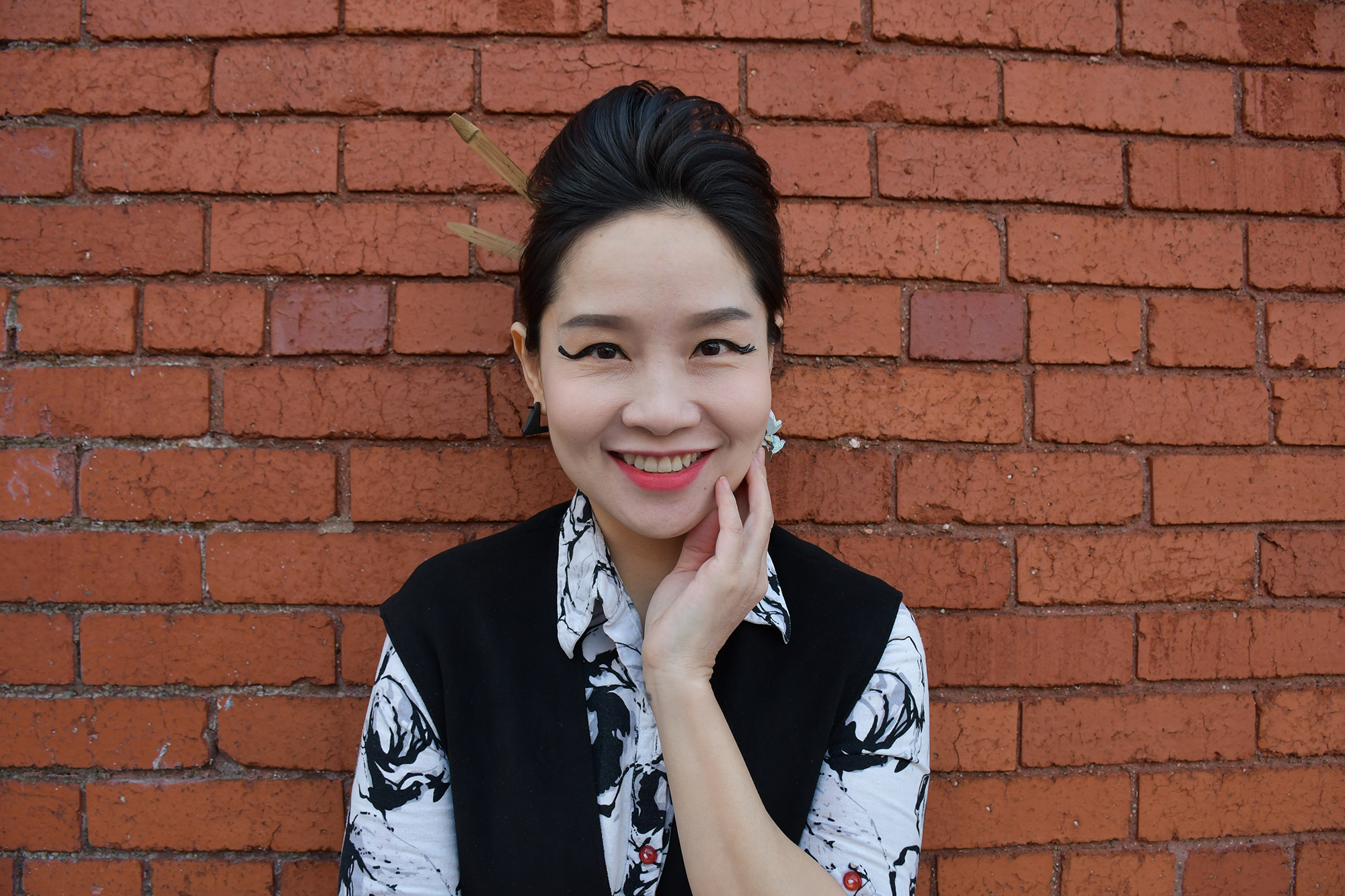
Mai Khoi
I am an artist-activist from Vietnam. I began my musical career as a pop star, rising to fame after winning the 2010 Vietnamese Television Album and Song of the Year Awards. But when I began pushing against government censorship and involving myself in politics, I was banned from performing in public, detained and interrogated by the police, and ultimately forced to flee to the United States. I arrived in New York City in 2019 as a resident with SHIM:NYC and moved to Pittsburgh one year later as an Exiled Artist in Residence at City of Asylum. Although the pandemic initially made it difficult to connect with other artists, once pandemic restrictions were lifted I immediately found so many talented and open-minded musicians to work with. I have made Pittsburgh my home ever since.
Pittsburgh’s new music community is friendly, welcoming, and supportive to musics and musicians of all backgrounds. Although we have a small population we have a lot of music lovers who always come out to shows. I have helped found an organization called the Pittsburgh Sound Preserve, which hosts an every-other-week Open Improvisation Lab free for members of the community and sponsors various other concert series highlighting creative music throughout the city. I love performing at venues like the Space Upstairs, City of Asylum, and the Government Center, as well as more DIY spaces like James Simon Studio, Telephone, and a variety of unique house concert stages. Pittsburgh’s low cost of living has even made it possible for me to afford a house of my own, in which I’ve been able to set up a small studio, hold rehearsals, and cook Vietnamese food for my friends and bandmates. But my favorite part about Pittsburgh is the people. Our community always comes out to support one another’s shows, and new projects and collaborations happen all the time. Pittsburgh is a college town, so we have a lot of young people alongside families who’ve lived here for decades. It’s very diverse, and in my experience, it has been the most welcoming and friendly city to immigrant artists like me.
Not everything is perfect. I still struggle to find gigs post-pandemic, and I still struggle with the language barrier and the different working culture. But I’m grateful to organizations that have supported me, including City of Asylum, 1hood Media, the International Free Expression Project, and New Music USA. With those resources, I have been incubating an autobiographical, multimedia stage show called “Bad Activist” alongside fellow Pittsburgh artists Mark Micchelli, Cynthia Croot, and Aaron Henderson. I hope to bring “Bad Activist” on tour very soon, so that more people can learn about my story and experience the creative energy coming from my new, adopted hometown.
Music picks…
Mai Khôi Chém Gió: “What To Do” from Dissent
Afro Yaqui Music Collective: “Sister Soul” from Maroon Futures
Reza Vali
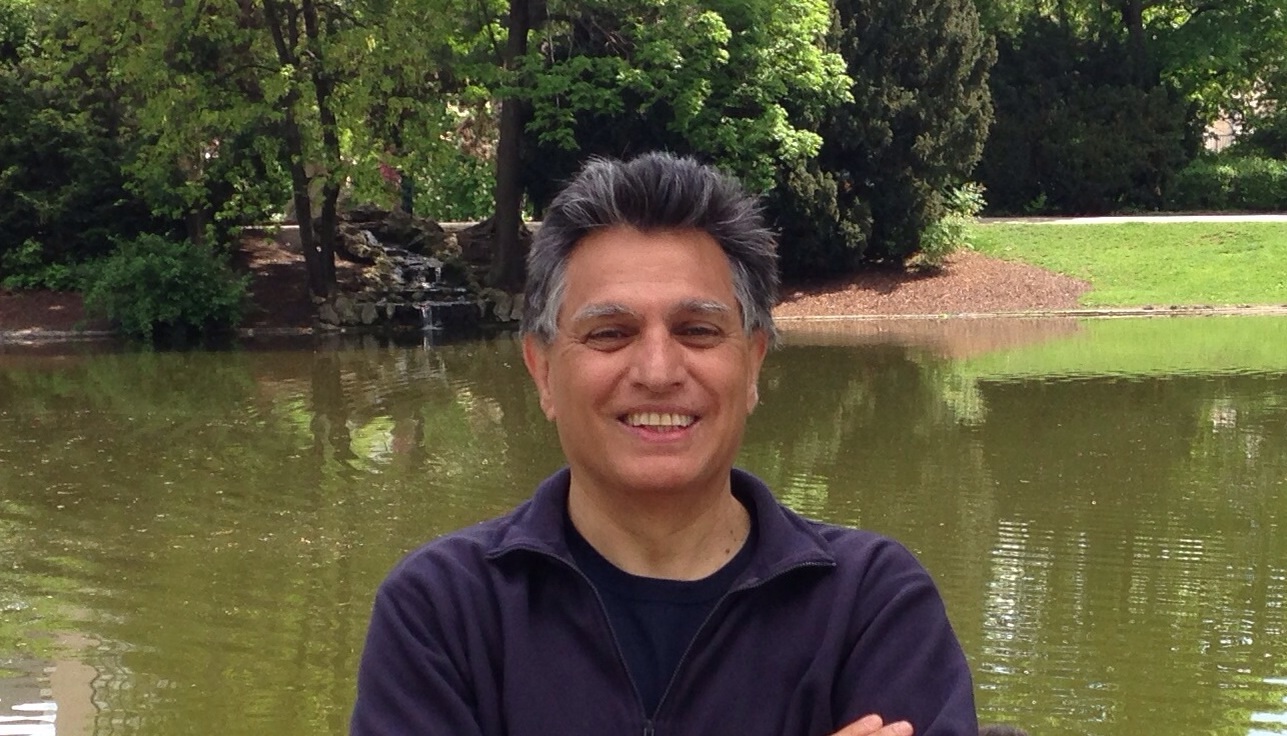
Reza Vali
I came to Pittsburgh with the purpose of pursuing studies at the University of Pittsburgh. After successfully obtaining a Ph.D. in composition and music theory in 1985, I taught at the University of Pittsburgh for three years. The year 1988 ushered in a new phase, as I was invited to join the School of Music at Carnegie Mellon University as an Assistant Professor of Music. My time at Carnegie Mellon University extended for 33 years, culminating in my eventual retirement as the Professor Emeritus of Composition in 2022.
Pittsburgh’s distinct character is characterized by several defining factors that set it apart from other places. First, its origins shaped by European immigrants infuse the city with an ambiance reminiscent of Europe. The architectural design and overall atmosphere lend Pittsburgh a unique European feel. Secondly, the city’s expansive green spaces, adorned with tree-lined streets and abundant parks, create a refreshing urban environment. This, coupled with a notably lower cost of living compared to major cities like New York City, contributes to a quality of life that combines affordability with a close connection to nature.
Moreover, Pittsburgh thrives as a cultural hub, mirroring the amenities found in larger metropolitan areas. It boasts an array of offerings, including symphony orchestras, ballets, operas, contemporary music, jazz, and more. Notably, the Pittsburgh Symphony Orchestra, esteemed as one of the nation’s finest orchestras, finds its home within the city’s confines.
While Pittsburgh’s artistic and cultural landscape is vibrant, navigating financial support for individual creative projects has presented its challenges. Philanthropic resources tend to favor larger institutions, leaving independent initiatives with limited funding opportunities. In this context, I express profound gratitude to my colleagues at the Pittsburgh Symphony Orchestra, whose generous support facilitated the realization of my musical aspirations. Their backing, manifested through four commissioned works, resonates as a testament to the city’s collaborative spirit and artistic camaraderie.
However, the period encompassing the COVID-19 epidemic proved to be an immensely challenging phase for me and many of my colleagues. The cancellation of numerous concerts of mine left me grappling with a profound sense of disappointment. The isolation that ensued meant that my interactions with fellow musicians were limited to the digital realm. The very essence of musical existence was compromised as we found ourselves devoid of pivotal elements – the shared rehearsals that foster creativity, the electrifying energy of live performances, and the irreplaceable connection with our audience. While the internet emerged as a vital tool during this time, facilitating virtual collaborations and performances, it became glaringly apparent that it could never truly substitute for the richness of the physical world and the genuine connections it fosters.
After navigating through the challenges of the pandemic, Pittsburgh is now reemerging into a thriving hub of musical activity. I am eagerly anticipating the opportunity to collaborate once more with numerous exceptionally talented musicians, joining forces to cultivate fresh artistic energies together.
Music picks…
Reza Vali: Segâh, Double Concerto for Persian Ney, Kamancheh, and Orchestra
Khosrow Soltani, Persian Ney
Kian Soltani, Persian Kamancheh
The Segâh Festival Ensemble, Conductor: Daniel Curtis.
Performed on January 15, 2016 at the Carnegie Hall in Pittsburgh as part of the Segâh Festival of Persian and Turkish Music.
The Segâh Festival of Persian and Turkish Music was organized by the Center for Iranian Music and supported by the School of Music of Carnegie Mellon University, the Iranian Students Organization, the Turkish Students Organization, and the Hoppa Project. The conductor, Daniel Curtis, is the Director of Carnegie Mellon University Contemporary Music Ensemble.
And here is one of my favorite Pittsburgh artists, my former teacher and jazz legend Nathan Davis…
Amy Williams
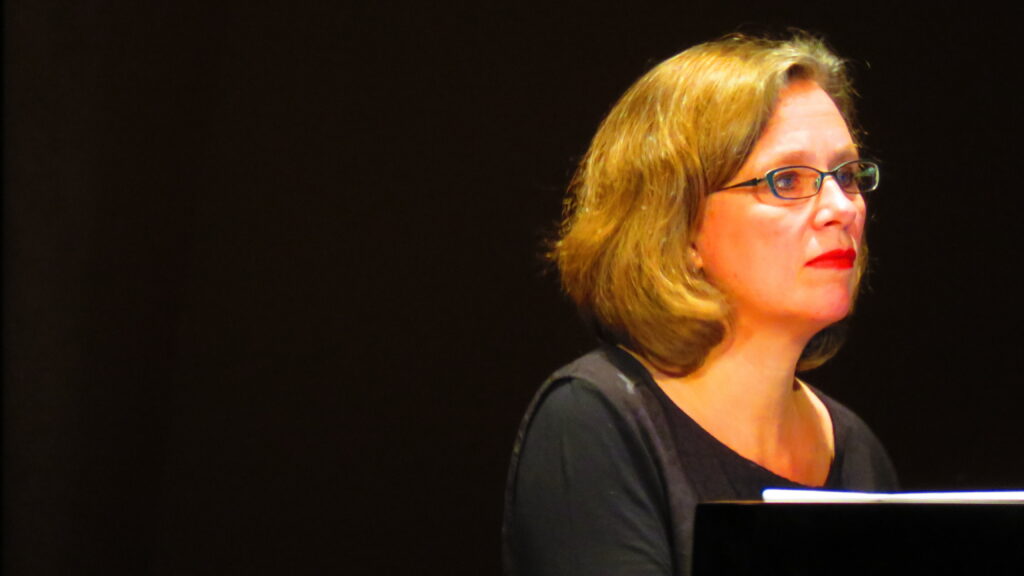
Amy Williams
I moved to Pittsburgh in 2005 to teach composition at the University of Pittsburgh. It felt “right” from the beginning, not just because it was 75 degrees and sunny on the February day that I interviewed (I’ve since learned that wasn’t typical). When I was teaching at Northwestern from 2000-2005, the new music scene in Chicago was really taking off. I was immediately performing (I am a pianist as well as a composer) and hearing my music in venues from Evanston all way down to Hyde Park. I was a little nervous about moving to a city that was much smaller—afraid there wouldn’t be the same kind of cultural activity and opportunity. But I was wrong about that. The smaller size meant fewer hurdles to entering new scenes and spaces. “Hi! Who are you? Welcome!”—is the predominant attitude—and that is not the case in every comparable city.
I encountered many tremendously talented composers who were also highly entrepreneurial in their efforts to program new music. These individuals have transformed the new music culture, perhaps more than institutions. David Stock (who died in 2015) started the Pittsburgh New Music Ensemble in 1976 to support the exciting range of music being created by Pittsburgh composers. My colleagues at Pitt, composers Eric Moe and Mathew Rosenblum, founded the Music on the Edge series 30 years ago to bring superb international ensembles to Pittsburgh and to host major events such as the Beyond Microtonal Music Festival. The Sound Series at the Andy Warhol Museum, established in 2004 and curated by Ben Harrison, blurs genres in its aesthetically diverse programming. City of Asylum and the Kelly Strayhorn Theater are important spaces for multi-disciplinary programming. There is cutting-edge dance, theater, opera, film, and a burgeoning DIY scene with a growing number of alternative spaces.
You can’t talk about Pittsburgh without recognizing the legendary jazz tradition shaped by giants like Billy Strayhorn, Erroll Garner, Ahmad Jamal, and Mary Lou Williams. That tradition remains active and influential through organizations such as the Manchester Craftsmen’s Guild, the Pittsburgh International Jazz Festival, and the annual Jazz Seminar at Pitt. The Pittsburgh Symphony is a world-class orchestra that has supported the creation of new works over the years. When the PSO premiered pieces by five local composers (including myself) in 2014, there was a palpable excitement in the audience to cheer on the “home team.”
Pittsburghers truly love Pittsburgh. And so they stay. Which means that they invest in the community, they create powerful cultural experiences and develop deep personal relationships. The relatively low cost of living helps emerging artists and there is a solid base of foundations that support cultural programming. That being said, more can and needs be done to make the arts accessible to broader audiences and demographics.
Pittsburgh is the city of bridges (and they’re not all yellow…). I see this as a metaphor for the music scene. There are distinct areas (communities, genres, spaces) that are clearly defined and have rich histories. But there is always a bridge to move from one area to another—through collaboration, conversation, reaching out to others.
Music picks…
Mary Lou Williams “Cloudy”
(Ed. note: Amy Williams’s orchestra piece Flood Lines references the 1938 flood in Pittsburgh and ends with a near quote from Mary Lou Williams’ tune “Cloudy”—also from 1938. You can hear an excerpt of a performance of it by the Pittsburgh Symphony Orchestra, conducted by Manfred Honeck, here.)
Emily Cook
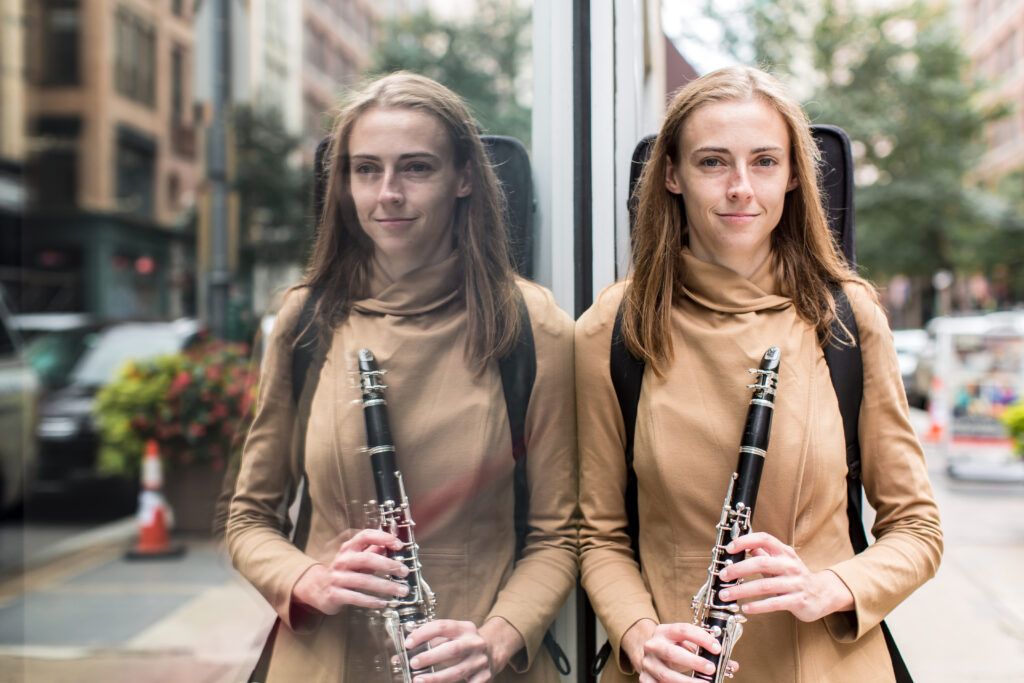
Emily Cook
I first moved to Pittsburgh in 2012 to attend graduate school at Duquesne University. I grew up in rural western Illinois and arrived in Pittsburgh after studying at Lawrence University in Wisconsin and spending several months living in Chicago. Before I had started to consider graduate programs, Pittsburgh was utterly off my radar—I have David Bell, my clarinet professor at Lawrence, to thank for steering me to Duquesne and to the city.
After I began to learn my way around my new home (literally—I distinctly remember getting terribly lost on Pittsburgh’s winding, poorly signed streets several times while trying out different routes on my commute to school), I fell in love with Pittsburgh—the topography, the rich and varied musical culture, the city’s scrappy personality, and the warmth and generosity of so many of the artists I had the opportunity to study with and work alongside.
In my experience, Pittsburgh’s music scene offers a really exciting mix of artists and audiences who are lifelong or long-term residents and more recent transplants, drawn to Pittsburgh to study at one of its several excellent (but very different) university music programs or for work. Pittsburgh has a strong sense of musical history and musical identity, but the constant arrival of new voices and ideas within a relatively small scene (compared to that in New York, for example) helps balance that sense of tradition with a healthy dose of flux.
In terms of the “new music” scene specifically, one unique aspect is the extent to which there is crossover between the streams associated with “classically trained” musicians whose background primarily involves working with notated music and musicians primarily working with improvised, “experimental” music. The dialogue between these genres has certainly helped expand the artistic practice of many musicians, like myself, who come from that “classical stream,” and I am grateful for the generosity that several musicians in Pittsburgh’s more experimental spaces showed me when I was newly exploring this side of my artistic practice.
While my orchestral work and my family have meant that I’ve spent considerable time outside of Pittsburgh in recent years, one of the things that continues to tie me to the city is Kamrat?n, a new-music ensemble now in its ninth season, for which I serve as artistic director. Kamrat?n was really the brainchild of our violinist, Jennifer Sternick, but it was born out of a lot of conversations among several women who regularly crossed paths through our freelance work. Not only did we want an excuse to play together more often, we also wanted to try to create a work environment that reflected our values. After solidifying our personnel and developing an identity as an ensemble, our programming has often focused on improvisation and the performance of non-traditional scores, with a particular emphasis on presenting works by emerging Pittsburgh-based composers and works by women.
The pandemic gave me and many other musicians the space to think more carefully about the value of live performance, the challenge of combining a career in music with a role as a parent or caregiver (particularly when faced with the collapse of many support systems for caregivers during the pandemic), and the need to advance equity in our field, considering not only what is being performed, but who makes curatorial decisions and how people are compensated for their work. However, I’ll address this question on a personal note: the pandemic arrived a few years after I began experiencing symptoms of what I now know is a genetic condition and an autoimmune disease. Dealing with these health issues already had me doing some serious soul-searching about my future as a professional musician when Covid-19 put a sudden stop to my performance work. At that point in my life, finding a “why” was a challenge, but I ultimately emerged from that period with a renewed sense of purpose and enjoyment in my work. The experience really brought home the important role that musical performance can play in creating spaces for people to be in community together. I have no illusion that I’m always successful in this regard, but the possibility of community is really what I’m trying to create through my artistic practice, whether I’m preparing for an orchestral performance, composing or improvising, or exploring potential programming for Kamrat?n.
Music picks…
This is me, performing with Dana Malinsky…
Cook/Ma by Emily Cook & Dana Ma
Listen to our Spotify playlist for Different Cities Different Voices which now features music from 9 different American cities….
The post Different Cities Different Voices – Pittsburgh first appeared on New Music USA.
The post Different Cities Different Voices – Pittsburgh appeared first on New Music USA.




